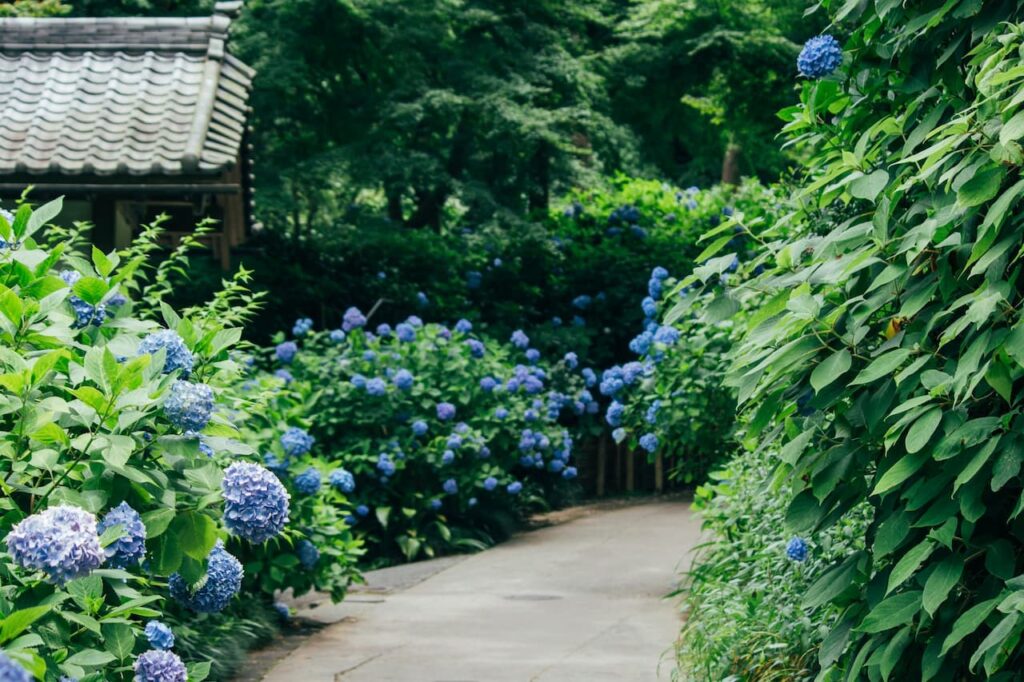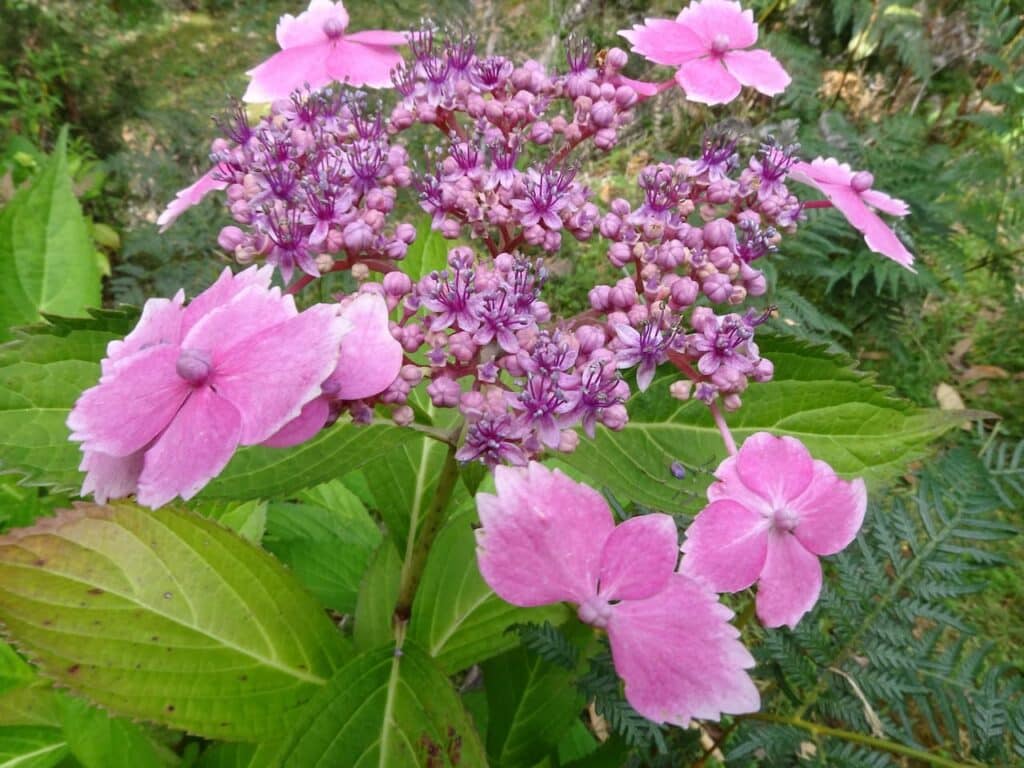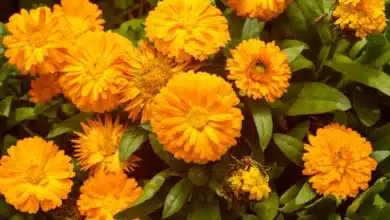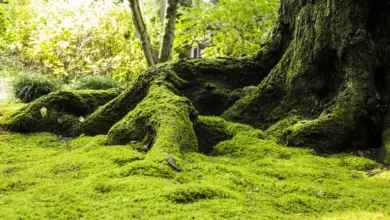How To Prune Hydrangeas
Being a popular blooming shrub, hydrangeas require proper pruning to guarantee their health, longevity, and flower production.
Whether used as a centerpiece in a bed, a border, or even just a collection of pots, hydrangeas are hard to beat. They bloom magnificently during the summer but then wither and perish over the winter.
Hydrangeas are low-maintenance plants that may thrive in a variety of soil and light conditions with only occasional trimming.
Learning how to grow hydrangeas is not difficult; just remember to plant and trim them at the right times, or they may disappoint you in the long run. Fortunately, it’s not hard to pick up.
They may be found in a wide array of colors, from white to pink, from light blue to dark purple. You may choose from a wide variety of complementary plants to complement the showy flower heads of hydrangeas.
If you know how to dry flowers, you may use some of the flower heads to create beautiful, long-lasting arrangements for your home.
The type of hydrangea you have will determine how you prune it. In this article, we’ll explore hydrangeas, their many varieties, and the best ways to trim them.
Pruning Bigleaf Hydrangea (H. macrophylla)
Certain hydrangea species, including bigleaf hydrangeas, establish their flower buds in the late summer or early fall when the weather cools down so that they can blossom the following spring on the old wood.
For this reason, pruning too early or too late in the year will ruin your chances of receiving flowers for a whole year.
Actually, bigleaf hydrangeas perform fine without any pruning at all. But, if you feel the need to prune it in order to keep it a certain shape or size, do it gently right after the blooms have faded, never cutting off more than a third of the total growth.
Cut Off Expired Flowers
It’s possible to maintain a neat appearance by removing faded blossoms from a plant. Just use bypass pruners to remove the flowers.
Cut Away Weak or Dead Branches
When the majority of blooms have died, it’s time to do some serious cutting back. It is best to start by removing any obviously diseased or weak branches. In spite of this, don’t go crazy with the pruning of the old wood, as it is this that will ensure continued blossoming as the new growth develops.
Trim Down to Size
You can reduce the size of the hydrangea by cutting back some branches if it has outgrown its current location.
Remove some branches all the way to the ground or to the main stem, but leave some healthy ones in place to ensure flower production.
If you want to prune your bigleaf hydrangea, you may cut it back by a third of its entire mass without harming the plant, but much more than that, and the shrub will suffer for a year or two.
Pruning Smooth Hydrangea (H. arborescens)
The smooth hydrangea, which includes the H. arborescens cultivars ‘Grandiflora,’ ‘Annabelle,’ and ‘Incrediball,’ typically blooms without a hitch, though its white flowers aren’t as striking as those of other hydrangeas.
The shrub is spherical and its leaves are slightly rounded at the base and pointed at the tip; their undersides are paler than their upper sides. When smooth hydrangeas bloom on new wood, they benefit from fairly severe pruning.
Take Out Damaged or Dying Branches
The first step is to prune away any dead or damaged limbs that have accumulated during the winter. These limbs need to be cut down to the main trunk or perhaps the ground.
Shape Pruning
It is possible to keep the plant’s rounded form with minimal trimming of additional branches. A big shrub with numerous little flower heads is the result of such gentle trimming. In this context, “light trimming” might indicate cutting as much as a third off of each stem.
Prune Hard for Big Flowers
When a smooth hydrangea is severely pruned (to within 12 to 18 inches of the ground), the resulting shrub often produces fewer but bigger flower heads. Possible need for flower supports due to the size of these blooms.
Pruning Panicle Hydrangea (H. Paniculata)
Panicle hydrangeas, often called peegee hydrangeas, have flower clusters that look like footballs or cones in the middle to late summer. The white, cream, or green blossoms gradually change to pink as they dry and stay on the shrub after the leaves have gone.
The Panicle hydrangea is a deciduous shrub that tolerates and even enjoys quite severe pruning since it blooms on fresh wood.
Cut Off Dead Flowers
Deadheading, or removing faded flowers, is a cultural practice that can be carried out throughout the blooming season. As the plant directs additional resources into further flowering, the flowering period is generally extended as a result.
Keep Shape with Light Pruning
As soon as the blooms fade, tidy up the shrub’s general form by selectively trimming away any branches that detract from its visual appeal. When the flowers have faded, the Panicle hydrangea still has a lot going for it as a shrub.
Hard Pruning in the Spring or Late Winter
In the spring, while this shrub is actively growing, it produces flower buds on its new growth. Pruning the plant back severely in late winter or early spring will not only prevent the plant from getting overgrown but will also stimulate healthy growth and flowering.
Pruning a Panicle Hydrangea by a third of its total bulk will not harm the plant. The simplest approach to accomplish this is to remove all of the smaller branches down to the ground, leaving only the bigger stems, which may be partially pruned back if necessary to maintain size.
Pruning Mountain Hydrangeas
Flowers of the mountain hydrangea are petite, flattened crowns on little, pointed leaves. Since its blooms are so similar, this plant is sometimes mistaken for Hydrangea macrophylla.
But, unlike Hydrangea macrophylla, the leaves on this variety are much smaller. Pruning should be avoided altogether in the absence of a clear need to shape the shrub. The plant flowers on aged wood and requires little maintenance.
Remove Dying Stems in Early Spring
In the early spring, before new growth has begun, you can use pruners to cut down any dead or winter-damaged stems to the ground.
Prune for Shape
Bypass pruners should be used to cut back stems to a pair of healthy buds once the shrub has stopped blooming. It’s not necessary to prune this shrub every year.
Pruning Climbing Hydrangeas
Gorgeous climbing hydrangeas are the sort that winds their way gently up a tree or other support.
Although it seems like a shrub, this plant is actually a woody vine that needs very little attention from a gardener beyond the occasional thinning. Pruning should be done just after the plant flowers since it blooms on wood from the previous season.
Pruning Down to Size
Climbing hydrangeas, once established, may expand rapidly, necessitating severe periodic pruning to create new limits at the beginning of each growing season. Just after flowering, do this trimming to encourage growth?
As most of the blooms on these plants are located towards the top, they will seem relatively unaffected by any cutting done to the sides.
Specific Pruning for Neglected Plants
In early spring, you may revive a neglected vine by cutting it all the way back to the ground. Yet, blooming will be drastically reduced for the next year or two as a result of this.
Improved Methods for Wood Trimming
If you prune your hydrangea bush too short, you’ll shorten its height and prevent it from thickening.
With new wood bloomers, you may be more nimble in terms of when and how you prune. Any time of year is fine for trimming these hydrangeas. While you may prune whenever you choose, late autumn and early spring are ideal.
You may still make your cuts if you miss these windows, but you should check to make sure no new flower buds have been established before you do so.
If you want to have a successful pruning experience, make sure to follow the aforementioned procedures. The next step is to determine whether you want to prune for plant form and health or to boost plant vitality and, ultimately, the size of your blossoms.
Formative Pruning
If you prune your hydrangeas properly, they will flourish and bloom profusely.
If your hydrangeas bloom from fresh wood, it’s best to just chop off about a third of the plant each time you prune. This may be done both vertically and horizontally inside the plant. There will still be plenty of plants left to encourage growth and blooming.
As far as I’m concerned, this is the best option. The inherent steadiness of the woody growth appeals to me. Even in the dead of winter, I prefer to keep track of where my plants are.
If you find that one part of your plant is noticeably woodier than the rest, you may easily go back and prune out a few more individual woody stems.
Check over the plant carefully before you make any incisions on how far back you want to clip it. One-third of the total height is possible, but it might also be somewhat less.
Once you’ve located the ideal area, look for a group of leaves that are quite near and cut above them. Keep the stem length to a minimum above the leaves. Do the same with the remainder of the plant.
When you’re done, take a moment to look at your accomplishment from a distance. You should also examine the altered form of your plant at this time. The stems don’t have to be the same precise height, but they should be fairly uniform.
Floral Pruning
Each branch of your hydrangea should be pruned down to the soil line if you want larger flowers.
Several types of trees and shrubs, known as “new wood bloomers,” generate both new branch development and flowers in the same growing season.
If you want to get rid of a lot of dead branches, don’t be afraid to go rough with your pruning.
Try pruning your hydrangea all the way to the ground in early spring if you want more flowers. Be certain that you are not using a wooden bloomer that is too old.
To prune, you need just cut each branch down to the ground with secateurs. Flower size may be increased by using this method of trimming.
You should also use this time to remove the leaves that have accumulated in your hydrangea over the course of the fall and winter months. If you want your stems to be more robust, though, you should stick to more traditional methods of trimming.
Conclusion
Both panicle hydrangea (Hydrangea paniculata) and smooth hydrangea (Hydrangea arborescens) bloom on fresh wood or the growth from the current year. Flowers appear later on new wood flowering shrubs than those that bloom on old wood.
You may be less harsh about when you trim these woody-stemmed hydrangeas than you would be with bigleaf species, as long as you do it before the flower buds open.







